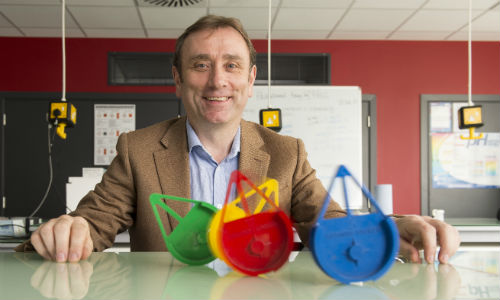We hear a lot about teachers battling to cope with demanding workloads, cuts to funding and difficult working conditions.
However, the excitement generated by the announcement that Edinburgh Napier is to introduce courses for secondary teacher education is evidence of the longstanding and continuing appeal of a career in the classroom.
In the first year, we will be offering Biology, Chemistry, Mathematics and Physics as subject specialisms with a total of 50 places.
Within three years, we plan to grow to a maximum of 120 places - keeping subject groups small enough to develop interpersonal relationships between students and with tutors - by offering Computing, English and Modern Languages.

Cutting-edge technology will be at the heart of what we do, using the latest teaching tools to ensure the courses taught at our Sighthill campus will produce people who will be a true asset to nearby local authorities which are presently short of suitably qualified specialist teachers. And is there a more inspiring place to learn to teach science than the research-intensive home of a university School of Applied Sciences?
I came to this post with wide experience of teacher education, particularly in Mathematics and Science, and from the start my colleagues and I were keen to provide a new and innovative postgraduate course which aligned with our core value of widening participation.
We quickly set up teacher focus groups and visits to local authorities which would potentially host our students, and we were blown away by the participants’ passion for teaching, and intrigued by their input on what the courses should deliver.
One recurring theme was the need to develop skills and practical approaches to issues that are everyday parts of teaching, from setting up science apparatus to managing pupil behaviour, and we have developed networks and explored skill sets that colleagues and external organisations may be able to bring to our student teachers.
We have incorporated opportunities in key areas like dyslexia, inclusion, mental health and the usual suspects of literacy and numeracy, and we will also be focusing on the pupil voice and looking to get them involved in some parts of the student assessments. Why, when teaching is for the benefit of pupils, do we not really pay attention to what they made of the lesson and value their opinion?
Another innovation will be the use of a video portfolio to digitally capture the student teacher, whether in university or in secondary school. With the use of an iPad and a small tracking sensor, it will be possible to record and then analyse teaching to a level not currently possible in other courses.
Student teachers will be able to practise body language, verbal communication and view their practical skills before receiving feedback from fellow students and tutors. It is like VAR for teaching in that many common errors can be identified and resolved before entering a real classroom with judgemental pupils. After developing ethical protocols with the schools, it is hoped that the video capture, using the swivl system, can also take place in a selection of classes.
As the teaching experience develops, students will be able to store and edit their best moments to document their increasing confidence and professional development in all areas of the professional standards required by the General Teaching Council for Scotland.
It is also envisaged that this video material could then be shared with mentors in the NQT or probation year to help set out career development plans and agree priorities both in areas of strength and for development.
Another innovation will be the use of Lego Mindstorms to provide problem-based learning scenarios for students to practise both the use of this technical material but also to model group challenges for use in a school-based project involving interdisciplinary learning.
Having a chance to practise with colleagues is imperative to fully understand what the interdisciplinary project is trying to achieve and how to react and provide guidance if things don’t go to plan.
Course projects will be developed with a view to sharing with the wider teaching community, and we have been approached by the Royal Society of Edinburgh education committee, to collaborate and explore how this may be managed.
Expectations are high but we would like to hear in five years’ time that we have been successful, and that our qualified students are both sought after and highly prized by employers.
The Professional Diploma in Education at Edinburgh Napier University launches in August.
This article originally appeared in The Scotsman newspaper. Read the original version here.